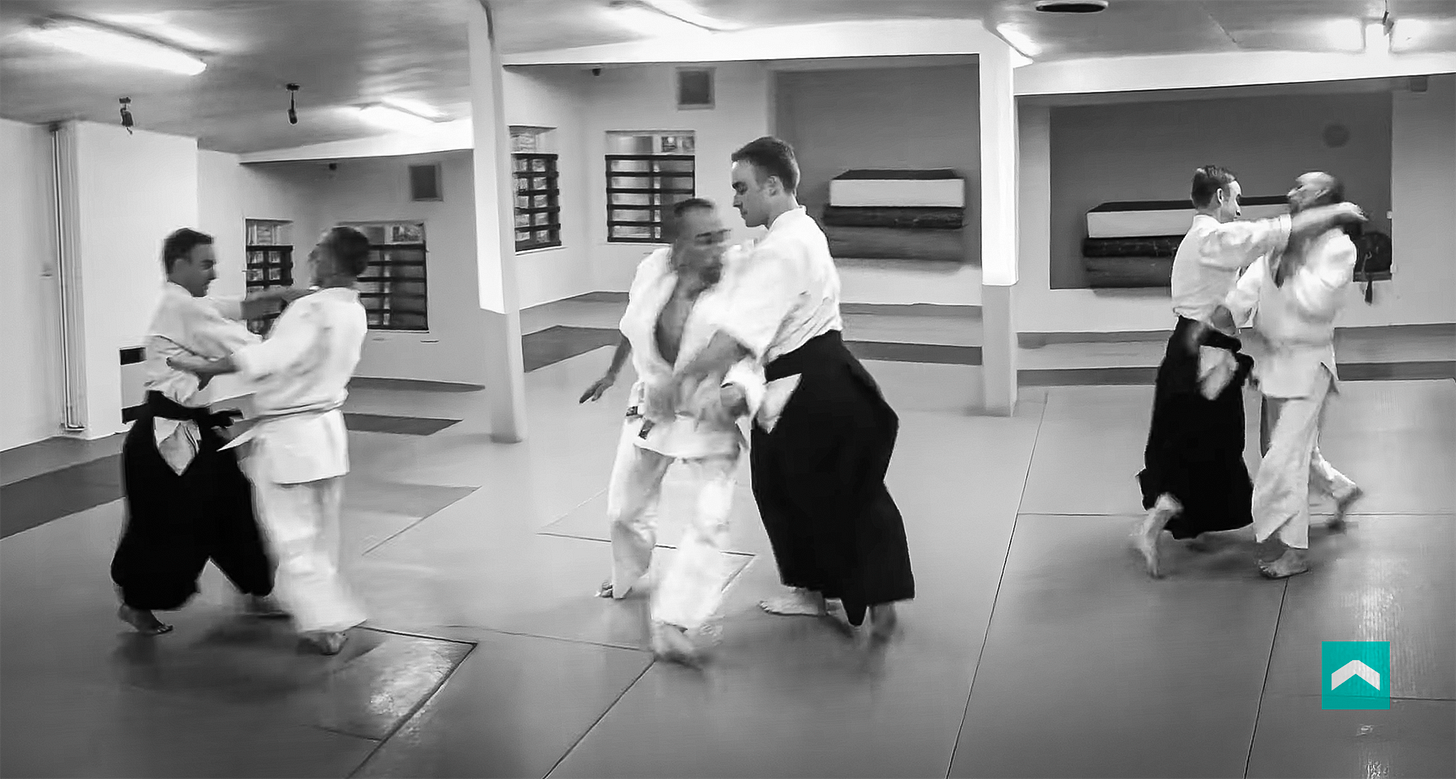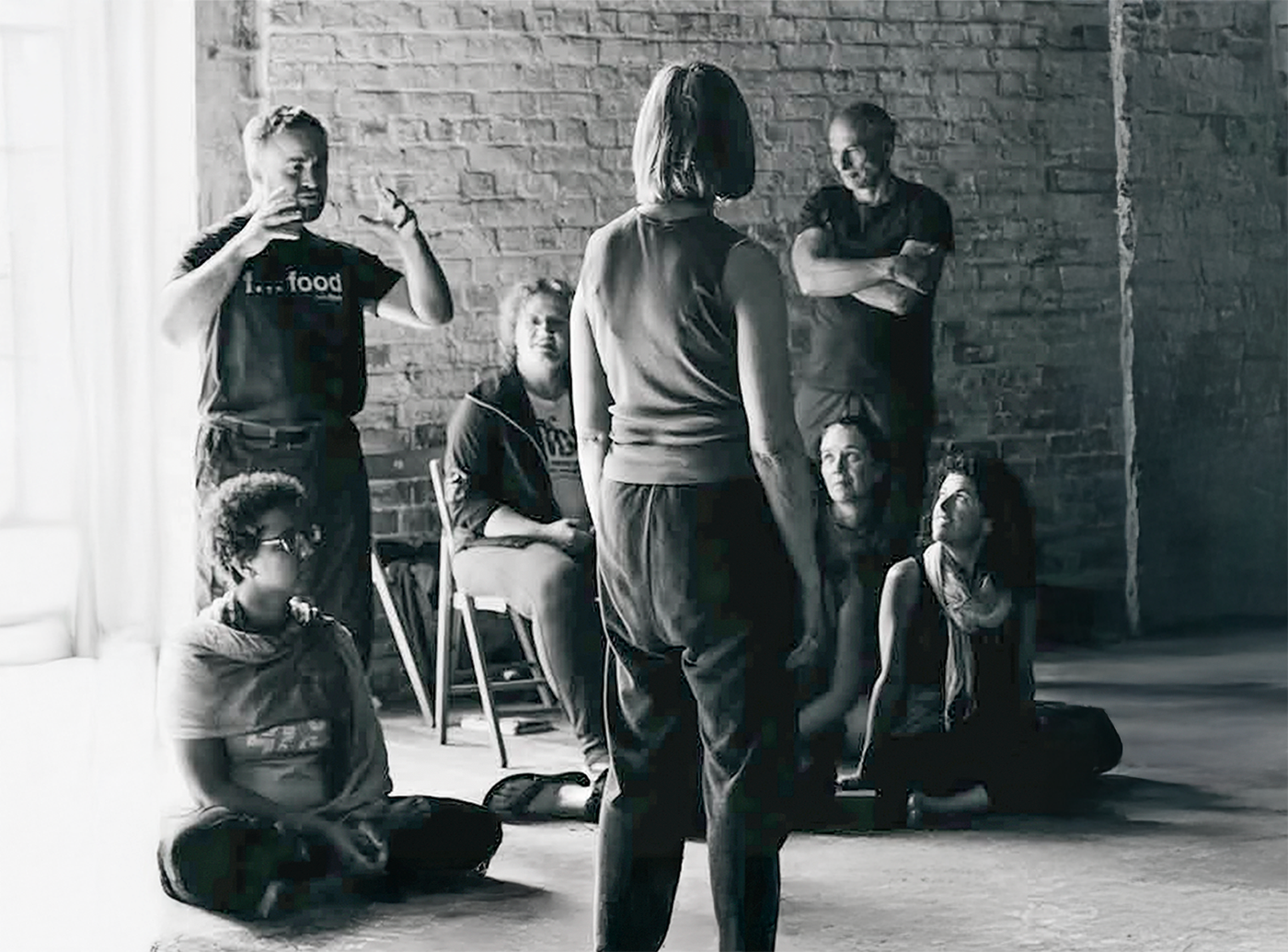Presence is the practice. Part 1: Calm in the storm - the gap we rarely train for
Why aikido teachers are great at staying centered under attack but struggle with everyday conflict
This four-part series exploring how Aikido teachers and practitioners can bring the art into daily life through embodied presence. This exploration emerged from conversations with Mark Walsh, whose work bridges the gap between dojo training and real-world application.
Mark Walsh is an embodiment coach with 25 years of aikido experience, known for bridging martial principles with real-life application. He’s trained trauma educators in Ukraine, led embodiment courses for coaches in over 40 countries, published three books, and hosts a popular podcast.
He also holds a black belt in aikido and has spent years exploring what happens when the arts we train don’t translate to the real-life conflicts we face. and has spent years exploring what happens when the martial arts we practice don’t translate to the real-life conflicts we face.
This series explores what happens when we step off the mat and face the real battlefield—not someone grabbing our wrist, but difficult conversations, emotional overwhelm, and the kind of conflict that can't be resolved with technique.
“I haven’t been attacked very many times,” Mark told me. “But I’ve been in a lot of arguments.”
The skills we train, the challenges we face
Most aikido teachers know how to keep their center when someone swings a bokken at their head. But how do you keep your center when someone criticizes your parenting? Or when your partner snaps at you after a long day? Or when your dojo is struggling and your own sense of worth gets pulled into the storm?
These are not edge cases. This is the battlefield.
Mark calls it the “translation gap”—the untrained space between what we know how to do physically, and what we actually face socially and emotionally every day. And most of us, even after decades of training, still haven’t built the bridge across it.
“Often Aikido people have physical skills, but they may not have transferred it into a sort of verbal social context,” Mark said. “You may be very calm when someone’s trying to hit you with a bokken, but if someone insults you... that might be more difficult.”
The truth of that landed immediately. I’ve had black belts students, who moved beautifully on the mat. But when they were verbally attacked, or simply asked to speak up in a group, their confidence vanished.
They didn't need more techniques but aikido they could use in conversation. I’ve felt it too. During a heated exchange with someone in a psychotic episode, all the physical techniques I had trained felt useless. They had no relevance to the reality of what was unfolding in front of me.
Such moments make something painfully clear: there’s a huge difference between what we practice on the mat and what we’re called to deal with in daily life. It’s about how we hold ourselves in moments that count. Presence. Regulation. Awareness. All the things we drill on the mat start to matter most not when someone grabs your wrist, but when something grabs your nervous system.
Have you trained for years, stayed centered under dojo attack, only to unravel in a tense conversation with your spouse?
When harmony meets reality
We talk about aikido as harmony. As presence. But if that harmony disappears when the hakama comes off, what are we really practicing?
There’s no shame in struggling with this. We’ve simply never trained it. And that’s what this series is here to change.
Over the next few posts, we’ll look at how to bridge that gap, what actually helps in real relationships, and why helping others doesn’t mean fixing them.
But first, let’s stop pretending we don’t need this.
Aikido has long taught us how to deal with physical confrontation. But what’s far more common (and far more difficult) is emotional friction. And until we get honest about that, we’ll keep our best skills trapped inside the dojo, helping nobody but ourselves.
Why this matters now
Mark’s work points to a deeper truth. The biggest shift isn’t just doing something different, it’s noticing what we’ve been blind to. As he puts it:
“You can be relaxed and skillful physically, but that doesn’t necessarily mean you’ve transferred that to the rest of your life.”
This is what embodiment actually asks of us. Not to adopt a new technique, but to bring the same clarity and presence we have in a dojo into conversations, conflict, parenting, leadership, and grief. That’s the work. And it’s often much harder than being thrown across the room.
Even Mark, who’s trained thousands of people in 40 countries, admits he struggles with it. “Embodiment is not perfection,” he says. “It’s noticing more. Recovering faster. Being less of an asshole when things get hard.”
So that’s where we begin: not with a solution, but with the real challenge. Aikido teaches us how to move. Now we have to learn how to live from that same place.
In Part 2, we’ll take a deeper look at what “centering” means, not just in a technical sense, but as a fast, embodied way to shift your state and influence others. It’s not mystical. It’s not about control. It’s the starting point for relational presence.





Hi Sasa, thanks for your articles. I really like the way you are exploring these topics. It resonates a lot with my own experience and thoughts on what keeps me practising Aikido. For me it’s a lot about exploring different qualities of human interactions in a safe space, and how to act appropriately and with ( lacking other word) „integrity“. Being a mirror and getting mirrored is a powerful gift which uke and nage are giving to each other constantly. We should use it not only for refining our technique but also for personal growth.
Thanks, Johanna! That "powerful gift" framing should be front and center in response to all those Aikido efficiency debates polluting FB and the internet. While people argue about whether techniques work in fights, practitioners like you are discovering what actually works for personal growth and authentic human connection.
I'd love to hear more about your experience!